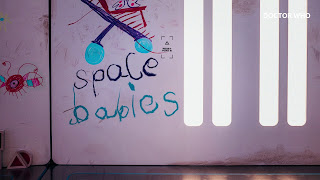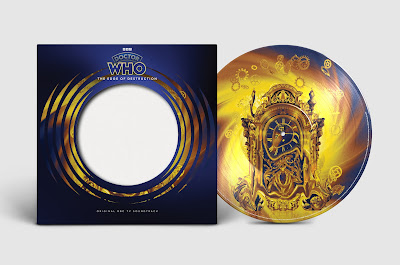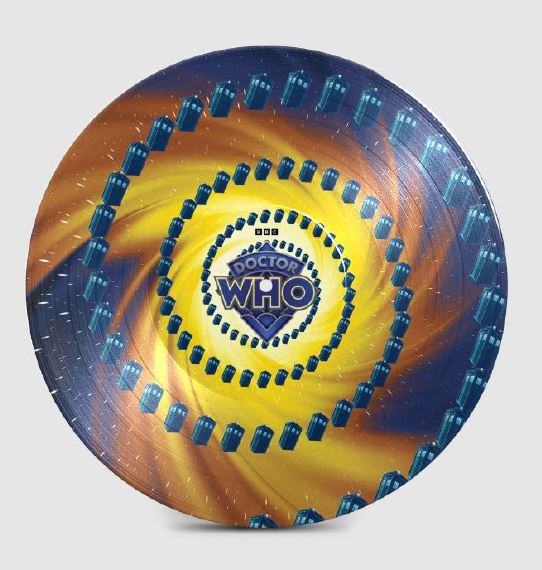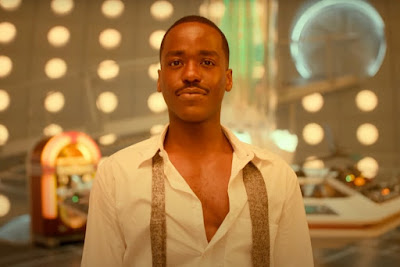So. I finally managed to get time to watch 'Space Babies' for a second time ... and so here are some thoughts.
I've always appreciated that Doctor Who can tell all manner of different stories ... and that, for the most part, anything goes ... And of course if you don't like a particular episode, then there's another along next week which you might like. Thus Doctor Who has always been. For every 'The Twin Dilemma' there's been a 'Caves of Androzani' ... for every 'The Web Planet', there's been a 'The Crusade' ... different stories, takes, times, eras, casts ... and tone, sometimes wildly different tones.
The problem in 2024 is that the internet amplifies the cries of those who didn't enjoy (or who claim to not enjoy but keep watching anyway), and seems to make them louder ... drowning out the voices who quite liked what they saw. Plus there's a lot riding on people knocking and complaining about the show. There are YouTube Warriors out there who get paid the more people watch their content, and bad news always 'sells more' than good. So it is in their interests to decry, loudly and forcefully, anything they see which they think they might get more clicks from by hating.
And I ignore all of them.
Everyone is entitled to their opinion ... so here's my take.
On first viewing I felt that 'Space Babies' was a strange way to open a new season with a new Doctor. OK, we'd seen him in 'The Church on Ruby Road' ... but this was the start of a new season and a new era for the show - Disney Who!
It seemed light and inconsequential somehow - a space station run by babies, whose parents had all inexplicably abandoned them, apparently against their own wishes, but one adult had stayed to look after them.
Lets get the questions out the way first: why are these babies just left there, presumably to die, by the corporation? (This is actually answered in a line from Jocelyn: 'It's the recession. The government closed the Babystation to save money, but the law says it's illegal to stop the birth machine.') Moreso, the space station is abandoned with a finite supply of food and air ... so this is a death sentence! Why don't the babies age? They have been there six years, but none have aged. And how do they know how to operate the station? I know there's an AI to look after them but even so! And who built all the levers and hands and ropes and pulleys to enable them to operate it? Maybe it was all the work of the on-site accountant Jocelyn? But that seems unlikely. And there are more babies growing in vats - the Doctor says it's a baby-making machine, but no-one thought to turn it off? (Again ... apparently it was against the law to do that!)I remember my reviews of the earlier Russell T Davies scripts, and this is a common complaint. There are questions which don't have answers ... probably because as far as the narrative is concerned (and a 45 minute runtime), they don't need answers. The viewer has to just accept, and move on ... and never is this truer than here!
So the Doctor and Ruby arrive, and find the space station run by babies, and there's a monster in the lower levels. A bogeyman. In fact a literal bogeyman as it's made from the snot and tissues discarded by the babies over the course of the years. There's something about the machine creating it because the babies needed to be scared ... or something ... but then the babies, who were all crying and wailing at the very mention of the bogeyman, suddenly get all motivated to try and hunt it down ... but then when Jocelyn tries to kill it, the babies are upset at that as well. Make your minds up! But of course the Doctor has to rescue it rather than killing it, and so, in scenes very reminiscent of Alien3 - I think - the one with the mutant Alien/Human hybrid anyway - the Doctor has to shut the airlock and save the monster rather than open it and kill it!I did wonder what the monster was intending to do with the Doctor/Ruby/any babies if it caught them. Was it going to just kill them? It showed no signs of any intelligence, so saving an irrational, roaring, killing, snot-monster seems a little reckless to me. And even if it did get ejected, then wouldn't the Machine just make another one?
Other random things about the episode. I noticed 'mavity' on the screen near the beginning, so that 'joke' is perpetuating. Actress Susan Twist crops up this time as one of the original crew on a monitor screen. The button to close the airlock is helpfully inside the airlock - wouldn't there perhaps also be one outside? And finally, the space station has no propulsion of its own, so the Doctor 'blows' it towards the 'home planet' by venting all the trapped and built up methane from the dirty nappies. But physics says that the station will then just continue on that course and basically crash into the planet, drawn there in part by its mavity. Assuming of course that the planet hasn't moved in the interim or the Doctor took any movement into account when he vented the ship. So he's just assuming/hoping that the inhabitants of the planet have some means to intercept the station and get all the babies (and accountant) off it before it burns up entering the atmosphere and crashes down to the surface. That's a bit of a risk to take! Plus what damage might the space station do if it did crash? Someone didn't think this through!And finally, finally, the ongoing story. I mentioned Susan Twist's appearance earlier, and we have the appearance of snow falling when the Doctor discusses Ruby being found outside the church. There's also the idea that he can never revisit that time again. But then the TARDIS does some sort of a DNA analysis of Ruby, and I'm not sure what the point of this was. The readings seem to show that she's human, and is aged either 10 years, 3 hours; or 19 years, 3 hours - you can't really see what that first number is. If it's 10; then that's odd. If it's 19; then that seems perfectly normal to me. Oh, and it snows in the TARDIS as well ... maybe the snow is important?
The mystery deepens.
There's also an interesting sequence at the start where Ruby accidentally steps on and kills a butterfly during a visit to ancient dinosaury history and is instantly transformed into some sort of reptile creature called Rubithon Blue. Luckily the Doctor somehow manages to bring the butterfly back to life (mysterious), and the timeline is corrected. Is this some sort of foreshadowing? Or just a fun scene to show what can happen if you trample through time. It's something not really touched on before in the series - that changing the past also changes the present and the future based on that point of view. The issue of course is that EVERY time is someone's future, so perhaps the Doctor was correct in 'The Aztecs' when he tells Barbara that you cannot change history ... not one word! Which of course implies that you can't actually do or change anything! Which is pretty hard!Overall I quite liked the story. It's simple, yes, but it ticks all the right boxes. It's exciting, and the babies are cute and well done. The sets and the space station are smashing, and the director wisely keeps the bogeyman's appearances to flashes and CCTV camera views, using close cutting and never quite showing the viewer the full creature. Although the full thing does look pretty good, there are obvious parallels to the Giger design for Alien.Not the greatest start for a season, but not bad, and the narrative certainly gives Gatwa and Gibson a lot of material to work with to make their characters shine.




















































